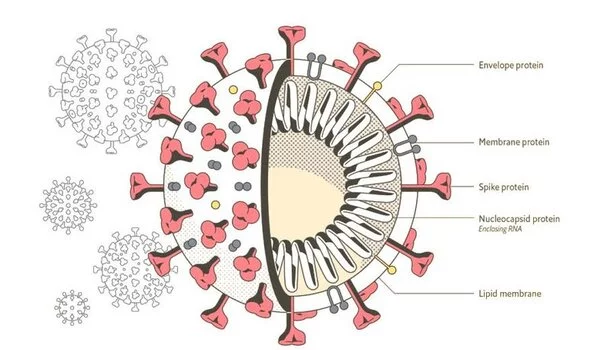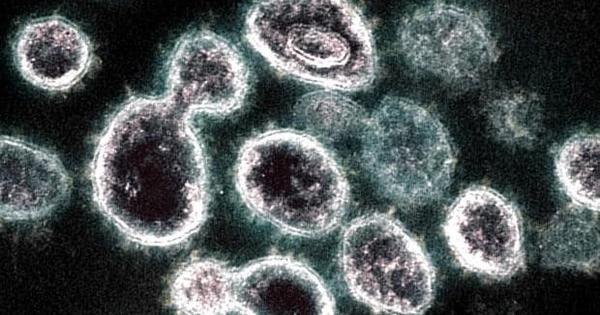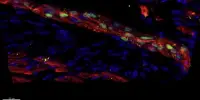Coronaviruses (CoVs) are a large group of enveloped positive-sense single-stranded RNA viruses. They infect humans, other mammals, and avian species, as well as livestock and companion animals, and are thus not only a public health concern, but also a veterinary and economic concern.
SARS-CoV-2, the virus that spreads COVID-19, has been successfully modeled by scientists. The study provides an overall understanding of SARS-CoV-2 assembly and formation from its constituent components.
A physicist at the University of California, Riverside, and her former graduate student have successfully modeled the formation of SARS-CoV-2, the virus that spreads COVID-19, for the first time.
In a paper published in Viruses, a journal, Roya Zandi, a professor of physics and astronomy at UCR, and Siyu Li, a postdoctoral researcher at Songshan Lake Materials Laboratory in China, offer an overall understanding of the assembly and formation of SARS-CoV-2 from its constituent components.
Our findings reveal key ingredients and components that contribute to the packaging of the long genome of SARS-CoV-2. Experimental studies on the specific role of each of the several structural proteins involved in the formation of viral particles are exploding, but many details remain unknown.
Roya Zandi
“Understanding viral assembly has always been a key step leading to therapeutic strategies,” Zandi said. “Numerous experiments and simulations of viruses such as HIV and hepatitis B virus have had a significant impact on elucidating their assembly and providing means to combat them. Even the most basic questions about SARS-CoV-2 formation remain unanswered.”
Zandi explained that the packaging of a virus’s genome into new virions or virus particles is a critical step in its life cycle. This is an especially difficult task for coronaviruses, such as SARS-CoV-2, due to their extremely large RNA genomes. Indeed, coronaviruses have the largest genome known for a virus that uses RNA as its genetic material.
SARS-CoV-2 has four structural proteins: Envelope (E), Membrane (M), Nucleocapsid (N), and Spike (S). The structural proteins M, E, and N are essential for the assembly and formation of the viral envelope – the outermost layer of the virus that protects the virus and helps facilitate entry into host cells. This process occurs at the membrane of the Endoplasmic Reticulum Golgi Intermediate Compartment, or ERGIC, a complex membrane system that provides the coronavirus its lipid envelope. The assembly of coronaviruses is unique compared to many other viruses as this process occurs at the ERGIC membrane.

Most computational studies to date use coarse-grained models were only details relevant at large length scales are used to mimic viral components. Over the years, the coarse-grained models have explained several virus assembly processes leading to important discoveries.
“In this paper, using coarse-grained models, we have been able to successfully model the formation of SARS-CoV-2: the N proteins condense the RNA to form the compact RNP complex, which interacts with the M proteins that are embedded in the lipid membrane,” Zandi said.
She added that “budding,” which is when a part of the membrane starts to curve up, completes the virus formation. The model Zandi and Li developed allowed them to explore mechanisms of protein oligomerization, RNA condensation by structural proteins, and cellular membrane-protein interactions. It also allowed them to predict the factors that control virus assembly.
“Our findings reveal key ingredients and components that contribute to the packaging of the long genome of SARS-CoV-2,” Li said. “Experimental studies on the specific role of each of the several structural proteins involved in the formation of viral particles are exploding, but many details remain unknown.”
According to Zandi, the insight presented in the research paper and the comparison of the findings with those observed experimentally could provide some of these details and inform the design of effective antiviral drugs to arrest coronaviruses in the assembly stage.
“The physical aspects of coronavirus assembly explored within our model are of interest not only to physical scientists who are beginning to apply physics-based methods to the study of enveloped viruses but also to virologists who are attempting to locate the key protein interactions in virus assembly and budding,” she explained.
“We now have a better understanding of which interactions are important for genome packaging and virus formation. This is the first time we’ve been able to fine-tune the interaction between the genome and proteins in order to obtain genome condensation and assembly at the same time.”
















